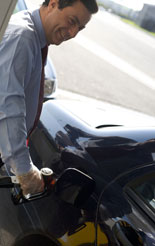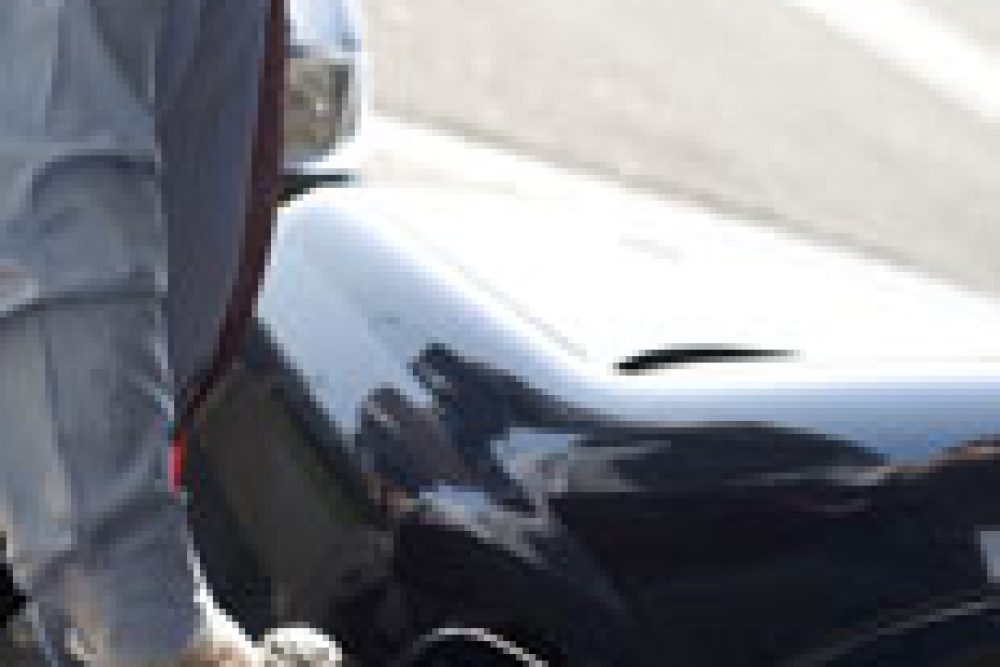
By Elvin Ravenscroft, technical development manager, RAC
Misfuelling – accidentally putting the wrong type of fuel into your car at the filling station – increased during 2007.
Our Rescue team attended 50,000 call outs for misfuelling in 2007. This simple error is hugely costly. There’s the loss of the contaminated fuel; the cost of the repair; and the cost of the replacement fuel.
The cost could rise to thousands if the engine is started.
Why is contamination a problem?
Diesel fuel is ‘oily’ and provides a lubrication film to the internal moving components of the diesel pump.
Petrol reduces the lubrication properties. It allows the very finely machined moving metal components in the pump to come into contact as the lubricating film is no longer present.
This results in the metal components failing. Metal particles are then pumped around the rest of the fuel delivery system.
All fuelling parts have to be replaced because any remaining debris will quickly re-contaminate the rest of the system.
Petrol also changes the way in which diesel fuel ‘burns’. This could lead to overheating of the pistons and cylinder head resulting in catastrophic engine failure.
So it’s important drivers make a conscious effort to check what fuel they are about to put in their vehicle.
What if you’ve filled with the wrong fuel?
If you realise you have put the wrong fuel in your car, don’t unlock the car. Don’t even put the key in the ignition (some cars now incorporate ‘easy start systems’ which begin to pump fuel around the engine as soon as the door is unlocked).
Under no circumstances should you start the engine. You could get away with a repair cost of around £200 to have the fuel tank drained.
However, if you do run the engine it can cause devastating and expensive damage. The cost could vary between £3000 to in excess of £6000 to repair a sophisticated engine.
People most at risk are those who drive both petrol and diesel cars regularly. Or business drivers that use rental vehicles. They should always double check the type of engine – it is an easy mistake to make but could be costly.
Drivers should never attempt to drain a fuel tank. This could be extremely dangerous with the risk of fire or an explosion. Petrol is also toxic and can cause serious health problems if ingested.
The problem of misfuelling is likely to get worse as the popularity of diesel cars continues to grow unless drivers take a few moments to ensure they put the correct fuel in their car.
Hints and tips to prevent misfuelling
- If you have more than one vehicle in the family using different fuel types, agree a colour coding for the keys (a bright green key tag for petrol cars and a yellow one for diesel vehicles, for example)
- Place a bright coloured reminder label inside the filler flap or even on the dashboard near the fuel gauge
On the forecourt with a diesel car
- If you’re not sure double-check the markings around the filler cap to make sure it’s a diesel engine – never assume
- Check the label and colour of the pump – diesel pumps are usually yellow or black
- It’s easy to get a petrol nozzle into a diesel filler neck by mistake – if the nozzle fits very easily into the filler neck with plenty of space around it double-check
- Petrol will damage a diesel engine
- Ensure that the pipes have been replaced in the correct holder on the forecourt pump (ie the diesel nozzle is not in the petrol pump and vice versa)
- Should you accidentally misfuel – do not put the key in the ignition, turn on the ignition or start the engine. Call a rescue service for advice
On the forecourt with a petrol car
- If you‚’re not sure double-check the markings around the filler cap to make sure it’s a petrol engine – never assume
- Check the label and colour of the pump – unleaded petrol pumps are usually green
- Never force a nozzle into a smaller filler neck – it will be the wrong fuel
- Should you accidentally misfuel – do not turn on the ignition or start the engine. Call a rescue service for advice







